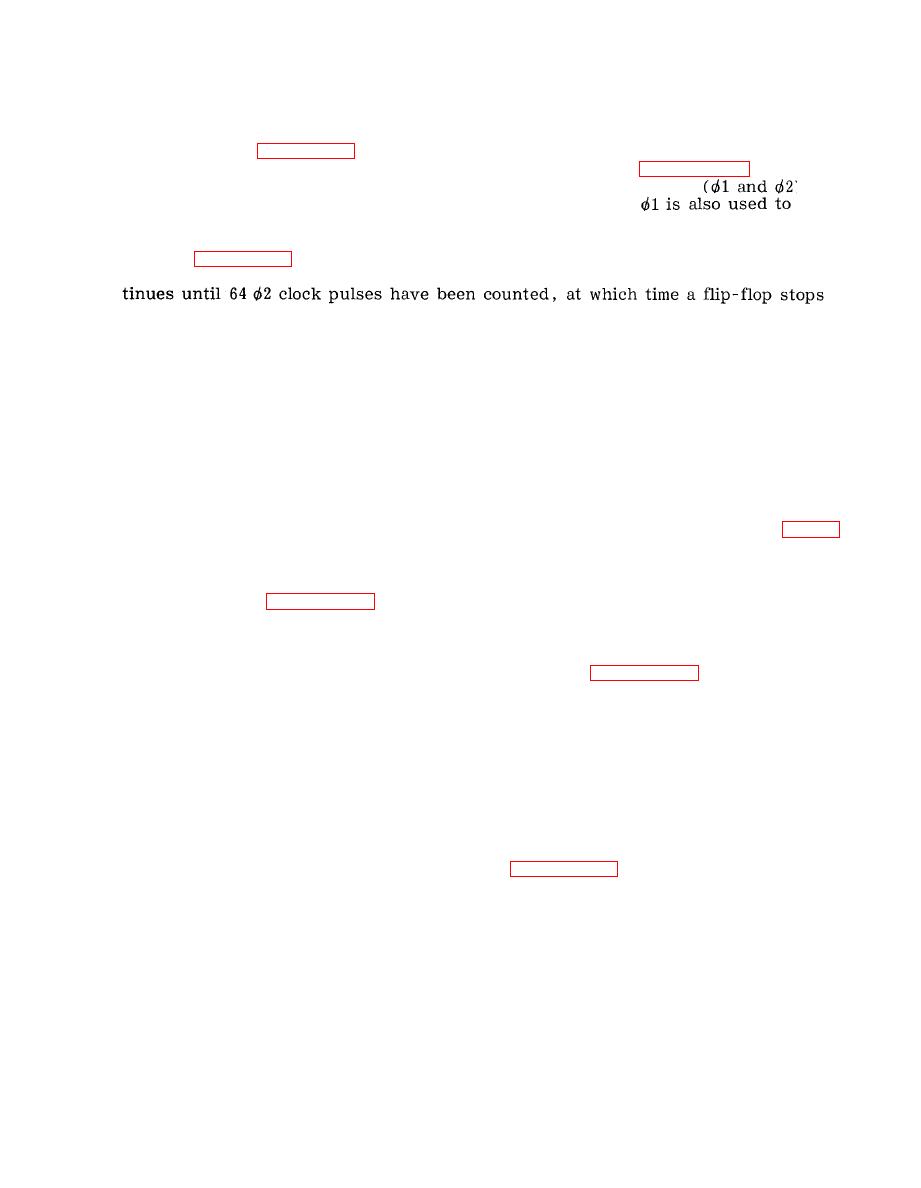 |
|||
|
|
|||
|
|
|||
| ||||||||||
|
|  TM 11-5820-917-13
4-34. The display system comprises four circuit card assemblies housed in two
modules, and the CRT display assembly in a third module, as shown in the overall
block diagram, figure 4-7. The basic timing signals are developed by the
timing control circuits (1A2A2). (Refer to block diagrams, figures FO-3 and
FO-4.) A 12-MHz clock is divided into two 1.2 MHz timing signals
which control the CRT memory readout and display. Clock
synchronize the CRT display with the memory loading in assembly 1A3. The CRT
scans from the bottom to the top of the display 280 times before making a horizontal
retrace (figure 4-8). Each vertical scan displays 128 bits of spectrum and AGC
data, stored 64 bits each in the odd and even memories. A vertical trace con-
the memory until 16 clock pulses have been counted for the vertical retrace inter-
val. When 280 vertical traces have been counted by the vertical line counter,
another flip- flop, establishing horizontal synchronization, inhibits every other
clock pulse. Thus, as the horizontal retrace takes place, the "memory timing
clocks drop to half speed for 16 vertical traces until the horizontal retrace counter
resets the horizontal sync flip-flop. In this period, 1024 bits ((128 divided by 2)
x 16) of memory are circulated but not used. Assembly 1A 2A 2 also controls the
interface timing with the spectrum analyzer 1A1 which provides the signal input
for display. A 1.5 kHz clock from the spectrum analyzer is used to establish a
1-second triggering of the spectrum analyzer output scan. The spectrum analyzer
generates a 200-point scan of the spectrum. The display unit loads every second
point until 100 bits have been stored in memory. The 100 bits are stored in alter-
nate cells of a buffer memory in Assembly 1A3A2. (Refer to block diagram, figure
FO-5.) After 100 bits from the spectrum analyzer have been stored, a switch on
1A2A2 triggers an amplitude-to-time conversion of the AGC level from the receiver.
A total of 28 bits can be clocked in for display of up to 60 dB of AGC variation.
Circuit 1A2A2 (figure FO-4) also generates the numerals (with a digital character
of the data present in the circulating memory.
4-35. The cursor storage and readout circuit 1A2A1 (figure FO-6) provides the
memory address pointer establishing which of the 280 memory lines is being
loaded by the current spectrum analyzer scan. This spectrum analyzer load line
counter is one of eight counters available on a 9-pole 8-position switch which is
scanned with each vertical retrace. The other seven positions of the switch are
used for display of cursors on the CRT display. The 9-bit spectrum analyzer
load line counter in 1A2A1 is compared with the display vertical line counter in
assembly 1A2A2. When the two counts are equal, a vertical load-line cursor
appears on the CRT display, and the CRT memory (1A3A1) is loaded with the
current memory line data from assembly 1A3A2.
4-36. The memory load logic circuit 1A3A2 (figure FO-5) provides the logic
for the loading of the CRT display memory 1A 3A 1 and supplies the on-off video
signal to the CRT display. The memory load logic provides two static 64-bit
buffer memories which temporarily store alternate bits for a line of CRT memo-
ry.
When the two memories are filled with data from a spectrum analyzer scan
and AGC scan, the contents are burst-loaded into the circulating CRT memory
at the appropriate point determined by the line counter comparison of assemblies
1A2A1 and 1A2A2. The on-off video data consists of numerals from the charac-
ter generator in assembly 1A2A2, frequency marks from 1A3A2, or data from
4-17
|
|
Privacy Statement - Press Release - Copyright Information. - Contact Us |